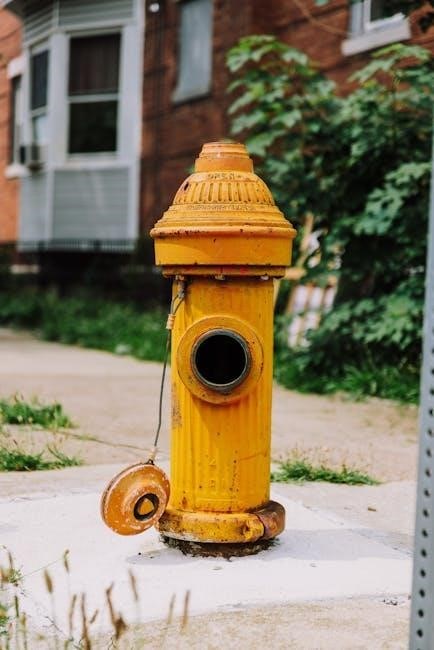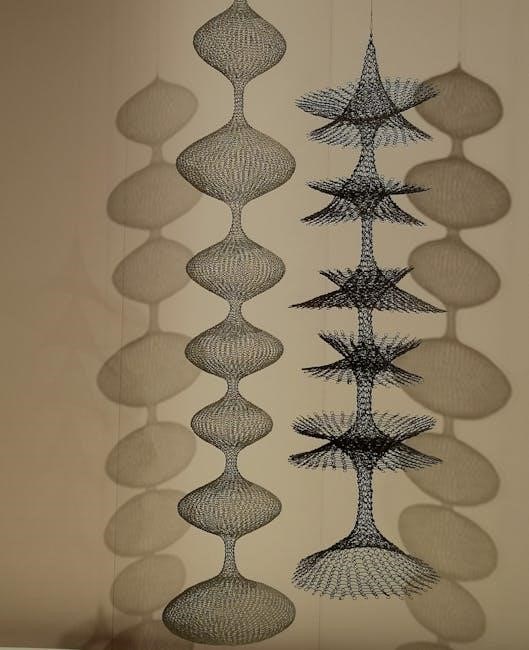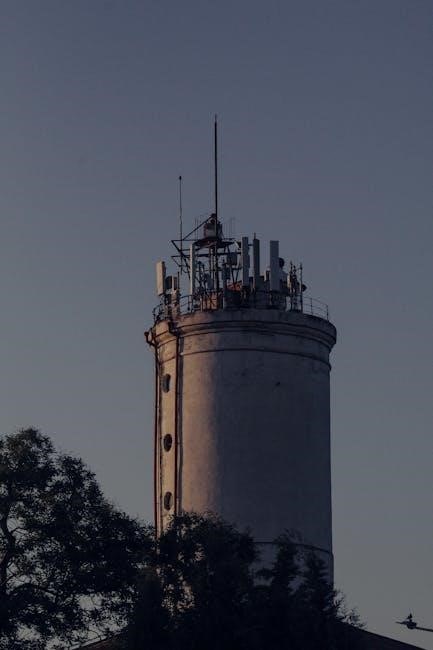Vertical Metal Siding Installation Guide

Embark on your vertical metal siding project confidently with this comprehensive guide. It provides essential knowledge for a successful installation, covering tools, techniques, and best practices. Achieve a durable, attractive, and low-maintenance exterior with our detailed instructions.
Vertical metal siding presents a durable and aesthetically pleasing option for exterior cladding, offering resistance to harsh weather conditions like hail and wind. Unlike some sidings, metal resists fading and provides long-lasting color retention. Steel siding, in particular, stands out for its robustness, making it a popular choice for homeowners seeking longevity and minimal maintenance.
This guide will walk you through the process of installing vertical metal siding, covering essential aspects from substrate preparation to final inspection. Whether you’re a seasoned installer or a DIY enthusiast, this information aims to equip you with the knowledge to achieve a professional-quality result. With proper techniques and attention to detail, vertical metal siding can significantly enhance your home’s curb appeal and protect it for years to come.
In this introduction, we will touch upon the benefits of using vertical metal siding, the different types available, and why proper installation is crucial for optimal performance. Understanding these foundational elements sets the stage for a successful siding project.
Tools and Equipment Checklist
Before commencing your vertical metal siding installation, ensure you have all the necessary tools and equipment readily available. Proper tools not only streamline the process but also contribute to a safer and more accurate installation. Essential cutting tools include tin snips or a power saw with a metal-cutting blade, crucial for precisely sizing panels.
For fastening, gather standard stainless steel or acceptable coated deck screws and nails, recommended for their durability and resistance to corrosion. A pneumatic nailer can expedite the process when used with house wrap. Measuring tools like a laser level, chalk line, and measuring tape are vital for maintaining alignment and ensuring panels are installed straight.
Safety gear is paramount. Include safety glasses, gloves, and appropriate work attire to protect against sharp edges and potential injuries. Additional items to consider are a drill, screw gun, ladder or scaffolding, and sealant for weatherproofing. Having this comprehensive checklist will help you work efficiently.
Substrate Preparation and Furring Strip Installation
Proper substrate preparation is critical for a successful vertical metal siding installation. Begin by ensuring the wall surface is clean, smooth, flat, and structurally sound. Remove any existing siding, debris, or protrusions that could interfere with the new siding. Inspect the sheathing for damage and repair as necessary to provide a solid base.
Furring strips, typically made of aluminum or pressure-treated wood, are essential for creating an airspace behind the siding, promoting ventilation and preventing moisture buildup. These strips must be installed vertically, spaced no more than 16 inches apart, center to center, providing adequate support for each siding board. Use a laser level and chalk line to establish horizontal or vertical reference lines, ensuring consistent alignment.
Securely fasten the furring strips to the sheathing using appropriate screws or nails. Ensure that the furring strips are level and plumb, as any inconsistencies will be reflected in the finished siding. This meticulous preparation is essential for a professional and long-lasting vertical metal siding installation.
Essential Trims and Accessories: J-Channels, Corner Trims, and Sill Trims
The proper installation of trims and accessories is crucial for a weathertight and aesthetically pleasing vertical metal siding application. J-channels are used to receive the siding on all sides of windows and doors, at rake edges of gables, and in other miscellaneous situations. Deeper J-channels are suitable for insulated siding, while narrower ones are for non-insulated applications.
Corner trims, both inside and outside, provide a clean and finished look at the corners of the building. Outside corner trims often come in two pieces: a substrate that is fastened to the building and a snap-on corner cap that is installed after the siding. Sill trims are used to finish off job site cuts on the siding, such as under windows, at eaves, and at porch door locations.
These trims often feature a snap-lock design, allowing the siding to be notched and locked into place without face nailing. Ensure all trims are securely fastened, typically with nails spaced 12 inches on center. Proper trim installation not only enhances the appearance but also contributes to the overall protection and longevity of the siding system.
Panel Cutting and Handling Techniques
Proper panel cutting and handling are essential for a successful vertical metal siding installation. When cutting panels to size, you can use tin snips or a power saw with a metal-cutting blade. Always wear safety glasses and gloves to protect yourself from sharp edges and debris. It is essential to avoid any risk of injuries during the cutting process.
When handling metal siding panels, exercise caution to prevent bending or scratching. Steel trims should be handled very carefully to avoid injury or damage. During installation, it’s crucial to avoid metal siding deviations. Store panels on a slope to allow moisture runoff.
Distribute partial panels evenly on both sides of the wall for a balanced finish. To keep your vertical metal siding looking polished and balanced, you want to avoid installing a partial panel on only one side. Remember, precise cuts and careful handling contribute significantly to the overall appearance and longevity of your vertical metal siding.
Always consult the manufacturer’s recommendations for specific cutting and handling guidelines.
Vertical Panel Installation: Overlapping, Fastening, and Sealing
The vertical panel installation process involves overlapping, fastening, and sealing to ensure a weathertight and aesthetically pleasing finish. Begin by overlapping the panels by the recommended amount, typically one or two ribs, and apply tape sealant along the overlap to prevent water infiltration. Ensure a piece of wood or metal support where two siding panels overlap.
Use standard stainless steel or acceptable coated deck screws and nails for fastening. Fasten each sheet completely except for the top row of fasteners, and complete each vertical course before lapping side sheets. Fasten all laps through the top sheet, applying pressure while fastening the overlapping side.
For non-insulated siding, a backer tab provides support at panel overlaps and behind panels at corners, ensuring a smooth installation. Vertical siding should be installed from the bottom up, overlapping each course. Use a chalk line to ensure the screws are aligned and vertical.

Proper sealing is crucial, especially around windows, doors, and corners. Ensure all gaps are properly caulked to prevent moisture penetration and maintain the integrity of the siding system. Careful attention to these details will result in a durable and attractive vertical metal siding installation.
Flashing Installation around Windows and Doors
Proper flashing installation around windows and doors is crucial for preventing water damage and ensuring the longevity of your vertical metal siding. Head and jamb trim should be installed around all four sides of the doorway to provide a clean and weathertight seal. When installing corrugated metal siding, metal head flashing around a window is essential.
Begin by installing J-channels around all sides of the windows and doors to receive the siding. The J-channels should be nailed 12 inches on center. Sill trim is used to finish off cuts on siding under windows and at door locations, and can receive vertical siding at window jambs. The snap-lock design allows siding to be notched and locked into place without face nailing.
Vertical Z-flashing can be used with both horizontal and vertical siding, nailed 12 inches on center. Ensure that the base is fastened securely to the building and is not twisted. Proper flashing prevents leaks and damage due to faulty application. Use a professional contractor for the installation of steel-kore steel siding to ensure proper installation.
Remember to carefully handle steel trims during installation to avoid injury.
Addressing Expansion and Contraction
Metal siding is subject to expansion and contraction due to temperature changes, so it’s crucial to accommodate these movements during installation to prevent buckling or stress on the panels and fasteners. Proper planning and techniques are necessary to ensure the longevity and performance of your vertical metal siding. A table of values for North America can help determine expected expansion and contraction.
Use a laser level and a chalk line to establish horizontal or vertical reference lines at every fourth panel to avoid deviations. In case of minor gaps between the siding and the strapping, use wood or metal shims before fastening. Ensure wood or metal support where two siding panels overlap.
Standard stainless steel or acceptable coated deck screws and nails are recommended for fastening. When installing, avoid angled installation greater than 15 degrees from vertical. Always refer to the manufacturer’s guidelines for specific recommendations on expansion and contraction allowances. Proper detailing and flexible sealant joints allow movement without compromising weather tightness.
Correctly addressing expansion and contraction ensures your siding withstands environmental changes.
Troubleshooting Common Installation Issues
Even with meticulous planning, installation issues can arise. Addressing these promptly is crucial for a successful outcome. One common issue is panel misalignment. Using laser levels and chalk lines to establish reference points ensures panels remain straight. Check for consistent overlap; inconsistent overlapping may indicate incorrect panel placement or substrate irregularities.

Another challenge involves fastener problems. If fasteners are not correctly seated, panels can loosen or become prone to wind damage. Always use the recommended fasteners and ensure they penetrate the substrate adequately. If you encounter buckling, it often indicates that expansion and contraction were not properly accommodated. Review the expansion gaps and adjustment methods.
Gaps around windows and doors can lead to water infiltration. Proper flashing and sealing are essential. Inspect flashing for correct placement and ensure sealant application is complete and watertight. Scratches and dents during handling are also common. Touch-up paint or panel replacement may be necessary to maintain appearance and prevent corrosion.
Always consult the manufacturer’s guidelines and seek professional advice when troubleshooting complex issues. Careful observation and corrective actions ensure a durable and attractive vertical metal siding installation.

Caulking and Final Inspection
Caulking and a final inspection are critical steps in completing your vertical metal siding installation. Caulking seals gaps and joints, preventing water infiltration and enhancing energy efficiency. Apply caulk to all trim intersections, around windows and doors, and where siding meets other building materials. Ensure the caulk is compatible with metal and exterior surfaces.
During the final inspection, meticulously examine every panel for proper alignment, secure fastening, and consistent overlaps. Check all trims for correct installation and secure attachment. Verify that flashing is correctly installed around windows, doors, and other penetrations, ensuring a watertight seal. Look for any scratches, dents, or other blemishes on the panels and address them with touch-up paint or panel replacement.
Inspect all caulked areas for complete and uniform coverage. Ensure no gaps or voids exist that could allow water intrusion. Clean any excess caulk from surfaces for a neat and professional finish. Confirm that all debris, tools, and materials have been removed from the work area.
A thorough caulking job and final inspection guarantee a weathertight, visually appealing, and long-lasting vertical metal siding installation. Addressing any issues promptly ensures the integrity and performance of the siding system for years to come.